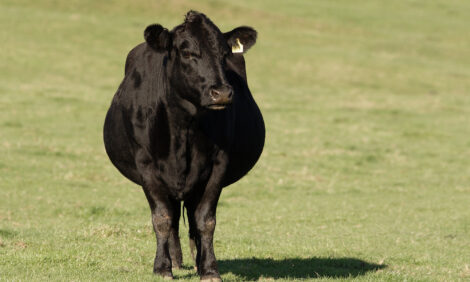



Where's the (not) Meat? - Byproducts from Beef and Pork
Animal byproducts contribute significantly to the US economy. This report by the USDA's Economic Research Service shows their importance and potential opportunities for the US industry.
Abstract
Animal byproducts contribute to the bottom line of the U.S. meat industry. Byproducts (edible offal (including variety meats), inedible offal, hides and skins, blood, fats, and tallow) include all parts of a live animal that are not part of the dressed carcass and constitute about 30 percent of the liveweight of hogs and about 44 percent of the liveweight of cattle.
Byproducts from animal slaughter provide raw materials used in pharmaceutical, cosmetic, household, and industrial products. Exports of edible offal also contribute to the value and profitability of the U.S. meat processing industry in a way that leads to higher prices for livestock producers, as byproducts account for more than 23 and 35 percent of the volume of beef/veal and pork exports, respectively. Regression analysis indicates that a 10-percent increase in the steer byproduct drop value adds a 1-percent increase in the five-area weighted average price for all grades of steers.
U.S. exports of beef/veal and pork edible offal have increased in recent years, mostly due to population growth, income growth, and consumer preferences for variety meats, especially in Asia. Income growth in the global marketplace, however, may have varied effects on the consumption and trade of variety meats.
Introduction
Animal byproducts, or offal, may not make up the real “heart” of the U.S. meat industry, given that the multiple uses for inedible animal byproducts are not often considered. And, variety meat dishes, such as beef tongue or pig heart, do not typically grace Americans’ dinner tables. Nonetheless, offal derived from beef and pork slaughter contributes to the bottom line of the U.S. meat industry. During 2001-10, edible animal byproducts (byproducts that do not include hides and other inedibles) averaged 23-35 percent of the volume of U.S. pork and beef/veal exports and 14-19 percent of the value.
Animal byproducts include all parts of a live animal that are not part of the dressed carcass. Produced jointly in the process of harvesting meat from the animal, byproducts constitute an estimated 30 percent of the liveweight of hogs and about 44 percent of the liveweight of cattle. In the United States, animal byproducts fall into three categories: hides, inedible offal, and edible offal, with variety meats being a subcategory of edible offal. Based on live value, byproducts account for more than 10 percent of the value for cattle and more than 6 percent of the value for hogs. Tallow accounts for about 20 percent of the value of live cattle, and lard accounts for about 9-17 percent of the value of a live hog. Although hides/skins and rendered products contribute to the value of cattle and hogs, this report focuses primarily on offal products. Hides account for 30-75 percent of the byproduct drop value for cattle but very little of the drop value for hogs.
The use of animal byproducts dates back to early civilization, with hides used for clothing and intestines used for food containers. The first recorded use of a cleaning compound, a soap made from animal fat and lye, was in the first century A.D. Early U.S. history also records production and uses for hides and tallow in the Western United States (Ockerman and Hansen, 2000).
Animal byproducts provide many of the raw materials used to make pharmaceutical, cosmetic, household, and industrial products. These products, along with hides and well-known variety meats, such as liver, tongue, hearts, and feet, all add value to the U.S. meat industry. But just how important are they and what role do they play in export trade?
Conclusions
The many uses of animal byproducts are often overlooked; however, these items contribute a significant value to the U.S. livestock and meat industries. Uses for animal byproducts include, but are not limited to, certain industrial, household, and cosmetic products; livestock feed additives; pet foods; pharmaceutical and medical supplies; human consumption; and foreign exportation.
Although the development of synthetic substitutes in the middle of the 20th century decreased the value of many animal byproducts, recent use in the pet food industry and the medical field and rising export demand are contributing to an increase in byproduct values in recent years. Evidence of byproduct value appreciation can be seen in both the beef and pork industries, but only for pork has the proportion of value added to the hog from the byproduct value increased significantly over the last decade. Empirical analysis reveals that wholesale byproduct values marginally influence the live animal’s value. This finding is supported by the willingness of packers to pay marginally more (or less) for live animals based on current byproduct market values.
Because the U.S. supply of edible offal typically exceeds domestic demand, the United States has historically been the world leader in exports of bovine and swine byproducts. Therefore, emerging markets that value offal products and are expanding their consumption will continue to play an important role in U.S. offal exports and thus, the U.S. livestock industry.
Further Reading
| - | You can view the full report by clicking here. |
January 2012


